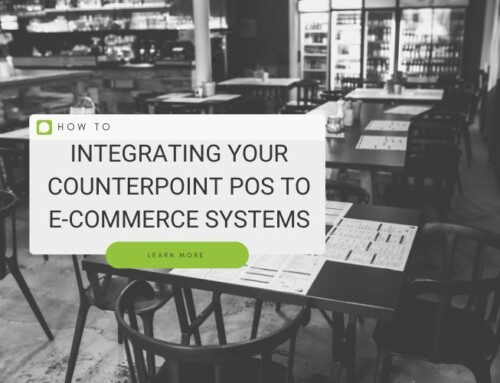Connecting Your POS and eCommerce Solutions
If you’re a brick-and-mortar retailer who’s just getting online (or maybe the other way around), you’re probably looking to connect your point of sale and eCommerce systems. Piece of cake, right? If we can put a man on the moon, this should be a breeze. The answer, as it often turns out with disparate technologies, is that it’s simple, but not very easy.
Your basic goal in connecting these touchpoints is usually three-fold:
-
I want to create a single inventory that syncs products automatically between various touchpoints.
-
I want to create a single transaction history, so I don’t have to keep two sets of books.
-
I want to create a single customer record that tracks purchase history across all the places that I do business.
It even sounds relieving; the seamless integration of two technologies working in perfect harmony to amplify the power of your time. Indeed, many companies are looking at ways to crack this egg.
Fortunately, you do have some functional solutions.
A Quick Technology Primer
For any two checkout solutions to accomplish these goals, they must effectively do one of the following two things:
- Both Systems Speak the Same Language
- Both Systems Speak Each Other’s Language
- Both Systems Speak through a Third-Party Interpreter

While different companies have taken different approaches to solving this problem, each solution effectively presents its own set of opportunities and complications. Here’s a brief look at all three, and how they work.
All-In-One eCommerce and Point of Sale
All-in-one POS and eCommerce solutions utilize a shared back-end code to surface products, carts, and checkout flows in-store and online. They may display them a little differently in each place, but they draw from the same database. This means that your data, sales history, and customer records are all stored in the same place and are accessible across platforms.
Shopify is a great example of an all-in-one solution. Big Commerce, Vend, and Bindo all offer similar products, as well. With these solutions, you manage your store from one central location and both checkout solutions are updated, in the process.
Because these systems tend to focus on small businesses, however, many of the tools that you might find built into a mid-market or enterprise setup aren’t natively present on your machine. At this year’s NRF Conference, we saw a lot of interest in scaling this model but believe that it will be another five years before there’s a truly viable product.
Connected Point of Sale and eCommerce
To have used these two systems at a management level is to understand how complicated each can be. Integrating two technologies that were designed to work in a stand-alone environment and getting them to speak to each other can be a difficult problem to solve.
Yet, various eCommerce companies are taking the next step in developing these technologies, using open APIs. As we move towards a more digital world it’s become impossible for brick-and-mortar POS solutions to simply ignore eCommerce and it’s virtually impossible to find a current solution without at least one pre-integrated online buying solution.
Custom integrations are a viable option here, but they can get pricey for small businesses and mid-market companies that don’t have internal development and testing resources.
 Third-Party POS and eCommerce Integrations
Third-Party POS and eCommerce Integrations
Several third-party software offers to bridge the gap between your existing point of sale and eCommerce solutions. These are most often surfaced through cloud-based omnichannel loyalty programs like bLoyal, which use a CRM-style interface to normalize data coming in from each touchpoint.
Integrated loyalty programs create a common point of connection between your POS and eCommerce solutions, synching inventory between the two systems, individually, and centralizing customer records and transaction history in the software’s native CRM. A value-added benefit to these programs is that they focus on leveraging this centralized data to provide increased consumer engagement and retention, over both platforms through various onboard marketing tools.
Some third-party integrated connectors have another valuable use. Say that you want to add a native application to your shopping experience, for instance: Because the core value proposition of these apps lies in their ability to speak many different languages, they can effectively leverage tools like SDKs to ensure that anywhere customers engage your brand, you’re able to provide a seamless shopping experience.
Remember that there are hundreds, if not thousands, of POS and eCommerce software solutions. Some loyalty software doesn’t integrate at all and no company has an out-of-the-box integration to every system on the market. Be careful to check that your third-party platform integrates with your existing solutions or offers a custom integration service.
Connecting your Point of Sale and eCommerce solutions can be tricky. No matter how you go about it, however, there’s no denying that this type of seamless experience is what customers now demand from your brand. If you need help understanding which is right for your business, please contact our sales team for more information.





